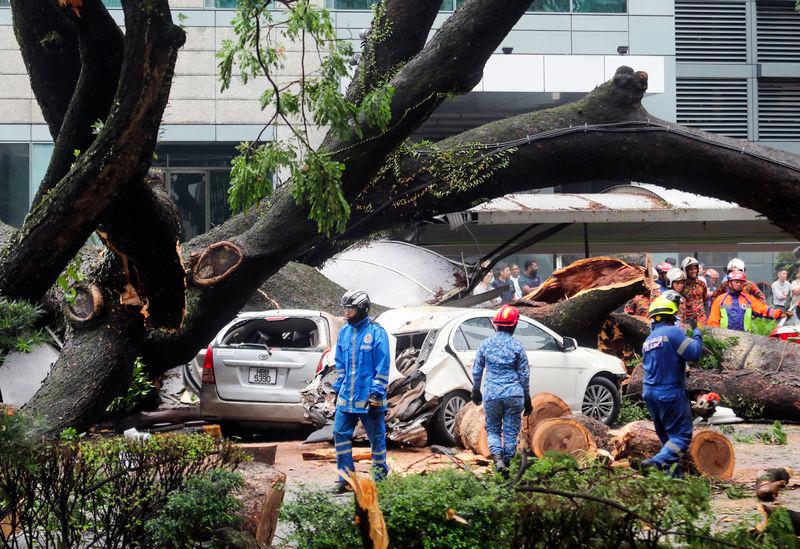KUALA LUMPUR: The public has been urged to wait for the government to release its official statement on why a large tree toppled at Jalan Sultan Ismail in Kuala Lumpur on May 7, killing a 47-year-old man and crushing several cars and a bus stop.
Lawyer Kokila Vaani Vadiveloo was giving her views on media comments by experts and the public on social media, some of which put the blame squarely on the Kuala Lumpur City Hall for being “negligent”.
It was earlier reported that the tree toppled because of landscaping work carried out by City Hall workers who severed the tree’s roots causing it to stand like a pencil.
“Ideally, families of the deceased and others who wish to claim damages should wait for an official statement from the government once a thorough investigation is completed.
ALSO READ: Authorities, property owners responsible for roadside trees
“As this is a matter of public interest, it is best to leave it to the authorities and experts to first conclude their investigation before apportioning blame or initiating any legal action.
“Once the official statement and/or investigation results are released, those affected can use that to proceed with legal action if there is a case,” she said.
Kokila added that barring the conclusion of the official investigation, it is premature to conclude that the main cause of the tree toppling is due to City Hall workers severing the tree’s roots.
She said nonetheless, if negligence can be proven, potential action could be taken against City Hall and the private land owner or occupier on which the tree is located.
On Minister in the Prime Minister’s Department (Federal Territories) Dr Zaliha Mustafa’s comments that tree inspections were carried out once every two years, Kokila said there is no specific guideline for this.
ALSO READ: Tree in crash incident was weakened by cutting of roots
“Based on the practice in countries with similar weather, such as Singapore, inspection of trees are carried out once every six months to two years. Also, the period of such inspections would vary based on the condition and location of the trees.”
Zaliha had also admitted that “while the 50-year-old tree was under private supervision, the frequency of inspections needs to be increased, especially given the unpredictable weather conditions”.
To this, Kokila said the minister’s words should not be construed as an “excuse” since the unpredictable weather conditions at the time were a valid contributing factor for the tree toppling.
She said one could argue that the tree may not have fallen if it were not for the bad weather which aggravated its condition by making the soil at its base unstable due to heavy rainfall and strong winds.
She added that METMalaysia’s confirmation that the weather was bad on the day in question further strengthened this argument.
ALSO READ: DBKL identifies 28 high-risk trees for axing, following tree collapse incident
Kokila said legal responsibilities for maintaining trees along public roads are outlined in statutes such as the Street, Drainage and Building Act 1974 and local government by-laws from 1976.
She added that the regulations specify duties related to the upkeep and maintenance of streets, footways and trees, placing obligations on the relevant authorities and property owners.
“That being the case, City Hall may be liable for negligence if it is proven that it had failed, neglected or refused to take proper action either by itself or against the private owner and/or occupier of the land in the maintenance and preservation of the tree.
“However, it would be premature to assign blame merely based on the timing or rate of inspection that has similarities with other countries,” she said.









